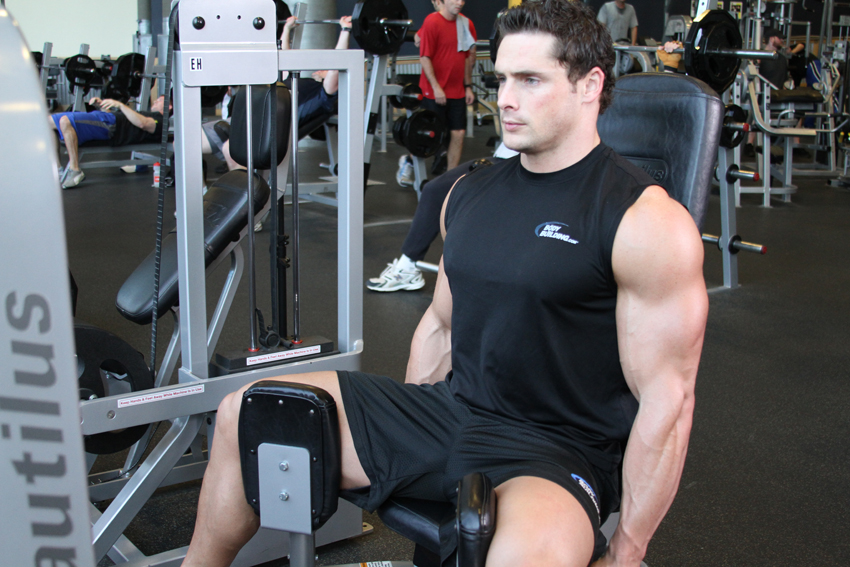The hip adduction / abduction machines are the most misunderstood pieces of equipment in the gym. In this post we explain why they’re so useful if set up correctly.

At a glance
Hip adduction /abduction machines are very useful for targeted hip muscle strengthening.
But misuse is common—poor setup in particular is a problem.
They won’t spot reduce fat from your thighs, but that’s not what they’re designed to do
Used correctly they can help to improve motion at your hips which is important for knee health in particular.
Introduction
Take a close look at the picture above. Do you notice anything strange?
Yes it’s a man on a hip adduction machine! Have you ever seen that before?
Strange isn’t it how certain pieces of gym equipment are almost exclusively used by one sex or another? Last time I checked men had adductor muscles.
So presuming you have muscles around your hips…
Are hip adduction / abduction machines dangerous?
When I was carrying out a little research for this post, I came across pages of articles on why nobody should use these machines.
Various reasons were given;
1) Hip adduction / abduction machines are dangerous.
2) They’re not functional (in other words there’s no transfer to other activities).
3) These machines don’t do what people think they do.
And my personal favourite…
4) They’re part of a worldwide conspiracy to make women think small is sexy.
Seriously.
Firstly, let me assure women everywhere that I don’t think the good people at Cybex for example (some of whom I know quite well and are women themselves), sit around designing machines in order to enforce a worldwide view on what size and shape a women should be.
More that they design machines that will improve the function of the people (men and women) who use them.
Hip adduction / abduction machines strengthen the muscles around your hips
It seems some people are upset these machines do not spot reduce fat from the inner / outer thighs.
This is true, but to my knowledge no machine manufacturer has ever claimed they do. Much like doing a bunch of sit ups for abdominal fat, these machines will have no impact on reducing fat around your thighs.
That’s not what they’re designed to do however.
In terms of strength gained from using these machines transferring to function, I can tell you it absolutely does. Some of my clients are runners who have lost the ability to rotate their hips inwards. This, in part, is due to weakness in their adductor muscles.
Strengthening their adductors with these machines dramatically improves their ability to run and stay both pain and injury free.
Likewise, weakness in the muscles that abduct the hip is relatively common and has been linked to knee injuries including patellofemoral pain syndrome (PFPS).
Hip abduction machines can be used to strengthen these muscles and improve outcomes.
This is the very meaning of improving function.
These machines are safe when set up correctly
Whilst I’m not aware of anybody being seriously hurt using these machines, there’s always a danger when any piece of equipment is not set up correctly.
The most common error is to allow the machine to take your hips into more abduction (out to the side) than you are capable of producing by yourself. This is usually done by coming up off the seat and pushing your legs apart as far as they will go when setting up.
Simple solution? Don’t do that.
Summary
Gym culture is full of fads and opinions based on zero science.
Adduction / abduction machines are useful tools to strengthen the muscles that control motion around your hips. Muscles which are weak in some people and can leave runners in particular susceptible to injury.
A machine is neither bad nor good, there’s just a right and a wrong way to use it.